While Chevrolet delivered buyers 21,513 Corvettes during 1963, only 2,610 paid the hefty premium to equip their car with the potent fuel-injected V8. That represents a low take-up rate, and circumstances meant that the number declined as time passed. This 1963 Convertible is a stunning vehicle restored to a high standard. It would suit a meticulous buyer craving a classic guaranteed to turn heads. The Fuelie is listed here on Craigslist in Granby, Massachusetts. With a sale price of $110,000, this Corvette will require someone with deep commitment and a fat wallet to take it home. I must thank Barn Finder Pat L for spotting this stunning Convertible.
The history of this Corvette is unclear, although the seller indicates it received a total restoration. They don’t say when this occurred, but the process included a repaint in its original shade of Saddle Tan. They use the term “as good as it gets” to describe the paint, and it is hard not to agree with the assessment. It shines magnificently under artificial lights, with no signs of inconsistency. The fiberglass is equally impressive, while the car features a White soft-top and a color-matched hardtop. The seller doesn’t mention any rust issues, and if they recently completed the restoration, the frame should be structurally sound. The trim and glass are immaculate, as you might expect from a vehicle of this caliber. The only item that raises questions is the aluminum knock-off wheels. Kelsey-Hayes produced these stunning wheels as an option for the 1963 Corvette, but two issues plagued them. The first was cost; the RPO list reveals they added a whopping $322.80 to the Corvette’s sticker price. There were also quality control problems, as the aluminum proved porous. This resulted in leakage on cars fitted with tubeless tires, and while they remained on the options list for 1963, I can find no records confirming that any ‘Vettes were delivered with that feature. There were 806 Corvettes fitted with the wheels for 1964 once the quality issues were history. That means that the knock-offs on this car could be a later fitment, or they may be reproductions. Only an in-person inspection will reveal the truth.
Lifting the hood reveals what separates this Corvette from mere mortals. The company offered three optional engines for 1963 buyers, but the daddy was the L84 version of the 327ci V8. This motor brought Rochester fuel injection to the party, allowing the motor to produce 360hp and 352 ft/lbs of torque. The power is fed to the back wheels via a four-speed manual transmission, and if you think that combination represents a potent package in a car weighing 3,042lbs, you’d be right. If the driver aims this beast down the ¼ mile, the journey would be over in 14 seconds. If they were brave enough to keep the pedal to the metal, that sweet V8 would run out of breath with the needle hovering around 144mph. The Fuelie engine had two weaknesses worth noting. The first was that the intricacies of the fuel injection system were beyond what many mechanics encountered, making it a mystery when faults occurred. Some repair shops tried their best with some success. Others threw the injection in the “too hard” basket, convincing owners to swap to a regular intake and carburetor to solve their problems. It is unclear how often this happened, but it reduced the total of what was an already rare feature. That poses the question of why the Fuelie option was rare. The answer is a simple one; Price. A buyer in 1963 could order their car with the L76 version of the 327. This motor provided 340hp and 344 ft/lbs of torque, costing the buyer $107.60. We’ve already covered the figures for the Fuelie, but that option cost buyers a cool $430.40. It is little wonder that a mere 2,610 buyers chose that route when they ordered their new toy. The seller doesn’t categorically state this car is numbers-matching, but that is the impression they give. They say it runs and drives exceptionally well, and its V8 packs plenty of power. That makes it a turnkey proposition for its next owner.
The owner supplies this single shot that provides a brief glimpse of the interior, which is disappointing for a vehicle in this price bracket. It shows Saddle upholstery that looks in good condition. The visible bright trim shines, and there’s no evidence of major problems with the wheel. The car features a radio, but it isn’t clear whether this is an AM/FM or the less expensive AM unit. Otherwise, it is a case of your guess being as good as mine. However, with the rest of the car presenting so well, you would expect the interior to be of a similar standard.
The C2 Corvette has cemented its place in classic folklore and commands more respect today than when it rolled off the production line. The buying public saw the Corvette as an integral part of the high-performance market, and it sold in numbers that would have seemed a dream to Chevrolet a few years earlier. The most desirable examples feature the beautiful fuel-injected V8. Buyers paid a significant price for the Fuelie option in 1963, and classic enthusiasts continue to do so today. Potential buyers can expect those cars to command a 40% premium over a similar vehicle with the entry-level motor. It is common for them to sell for more than $120,000, although recent sales results produce the occasional example that has sold for a considerably higher figure. That makes the asking price for this car look pretty competitive. It sits in a price bracket where the seller is unlikely to find seething hordes bashing down his door to hand over the cash, but I won’t be surprised if it finds a new home fairly quickly.





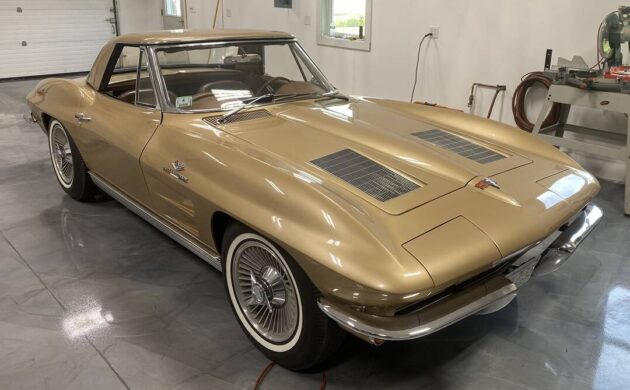

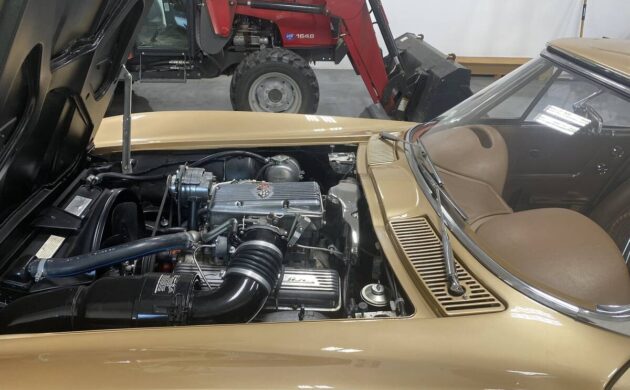
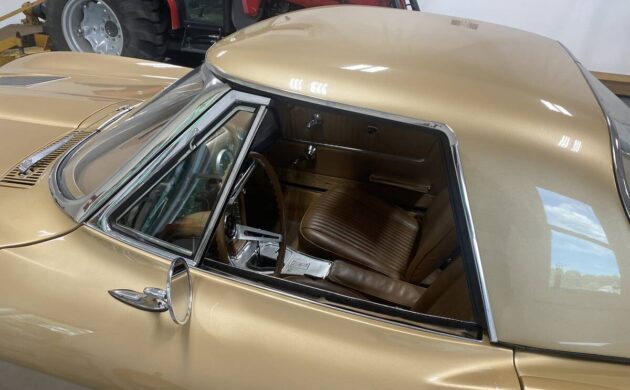

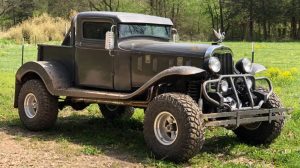

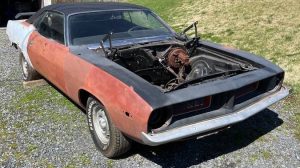
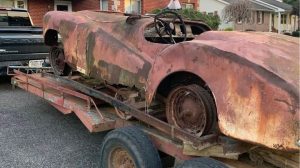


Do people know what restored and original mean? This guy does not. If a car is restored it is not original. Still it is beauty. 1963 coupes are the C2s bringing the most money. A black 340 hp split window took in $286,000 at Mecum.
What a blast! 360 hp with ~1600 KG weight is a pretty good figure.
The Vette with the entry engine was 250 hp so this thing with 360
accelerates very very good. I’m only disappointed from the price tag.
owned one like this about 1968..Paid 2500 and that included a boat..Was my “news car” at KEDD radio in Dodge City, KS..this is the one car I would like to have again..but price – yike!!!
lucky Gary
but i remember a similar for the bargain of 3500$ about 15 years ago.
1965 roadster
4 speed
positrac
rare 360 F.I. rat – race – engine. matching numbers
45’000 original mls
dark silver with black leather interior
original sidepipes
Kesley-Hayes rims with small whitewalls
Thinking about it i could bang my head onto the next wall.
I grew up in car crazy Southern California and never saw any of these with the optional aluminum wheels until 1967.
Maybe it’s my monitor but the paint on this Corvette looks way too gold to be Saddle Tan. I had a friend who had a Saddle Tan Split Window and I was around his car a lot and this car does not look the same color.
Craigslist listing says paint is a Custom Color!
@Lee
This is a copy and paste from the wording in the advertisement for this car:
“Car is totally restored in its original color of Saddle Tan”
I saw where you read it is a custom color but the ad carries more weight than that stuff on the side.
There was only one radio available on a Corvette. Until mid-year 63, that would’ve been an AM wonderbar unit as had been used earlier. Mid-year, the AM-FM radios were introduced, so later cars had AM-FM, and early cars had AM wonderbar. Also, the side mirror changed at about the same time. The mirror shown on this car is the early style, which was the same as those used on all 63/64 (and some 65) Chevs. The second style used a slender, nearly vertical post, similar to the earlier Corvettes and was used thru the 67 models. It would appear that this is an early model judging by the side mirror, which also indicates it probably came originally with the AM wonderbar radio.
@Chuck Dickinson
I owned Split Window, car #11,658 so it was close to 1000 cars past half way of production of 21,513. My car had the early style mirror like this car. Mine had the Wonder Bar AM radio and it had the storage wells under the seats. It also had the non-frosted wheel covers but those could have been changed easily enough.
One thing folks forget about Corvettes is that GM was not producing future NCRS/Bloomington Gold examples. They were mass-producing a car in a UAW automobile plant with daily production quotas to meet. Specific model year parts or the absolutely correct part, trim, hardware would never result in stopping production. “Down the line and out the door” Let the dealership worry about it, if the owner even notices.
Nice example here, and if everything checks out, it may be worth every bit of the asking price.
I’m a big fan of Saddle Tan interiors on Corvette. Not so much as an exterior color.
It’s got to be a rare choice.
Saddle Tan interior was available in leather at a price of $80.70 for 1963. This was the first time leather was in a Corvette and only in Saddle Tan.
I thought these cars were 365hp with dual quads and 375hp with injection ? ? ?
@Edward P Rotenbury
The 365 HP and 375 HP cars started in 1964. The 365 HP engine had a single 4-barrel carb and the 375 HP had Fuel Injection. The last time they used the 2×4 carbs was in 1961 on the 270 HP 283 engine.
Nice and only 3 hours from me.
$110K and not a single pic of the engine ledge, any casting numbers or the ID tag for the FI, the trim tag or the VIN plate??
The first 63 Fuelie roadster I ever saw was a black one with Hands mags, if anybody remembers those.